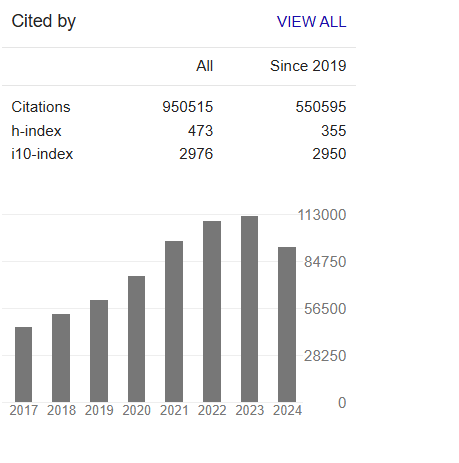Assessment of Physicochemical Parameters and Heavy Metal Levels in Surface Water and Sediment of Mgbuodohia River, Port Harcourt, Nigeria
Abstract
Akinfolarin OM, Gbarakoro SL and Kowere CL
The assessment of water quality is indispensable for suitability of human consumption. In this study, water and sediment samples were collected from two sampling stations along Mgbuodohia River for a period of three months and analysed for physicochemical and heavy metal parameters using standard method of analysis [1]. The results showed no significant difference between stations I and 2 (p> 0.05) for all measured parameters. The different measurements for surface water are as follows: Temperature 28.3±0.70 o C, pH 7.0±0.19, Conductivity 14122 ± 4280 µS/cm, Salinity 7.77 ± 2.56 ppt, TDS 12793 ± 4069 mg/l, Turbidity 3.09 ± 0.65 NTU, Alkalinity 39 ± 9.61 mg CaCO3/l, Total hardness 5024 ± 1543 mg CaCO3/l, Calcium 499 ± 166 mg/l, Magnesium 921 ± 290 mg/l, Chloride 12623 ± 5581 mg/l, DO 6.93 ± 2.87 mg/l, BOD 1.85 ± 0.63 mg/l, Nitrate 0.48 ± 0.20 mg/l, Phosphate 0.69 ± 0.02 mg/l, and Sulphate 630 ± 197 mg/l. Heavy metals had their respective levels for station 1(downstream) and station 2 (upstream) as 0.7 ± 0.51 mg/l and 0.34 ± 0.19 mg/l for Pb, 0.20 ± 0.10 mg/l and 0.21 ± 0.02 for Cd, 2.10 ± 0.10 mg/l and 1.61 ± 1.69 mg/l for Fe while Zn was not detected. The water Quality Index, WQI = 425. The sediment metal concentrations for stations 1 and 2 are 0.38 ± 0.50 mg/kg and 0.15 ± 0.18mg/kg for Pb, 0.10 ± 0.00 mg/kg and 0.03±0.04 mg/kg for Cd, 18.02 ± 11.34mg/kg and 28.68 ± 5.10mg/kg for Fe and 0.13 ± 0.12 mg/ kg and 0.34 ± 0.15mg/kg for Zn respectively. The levels of sulphate, phosphate and chloride were above the recommended standard. The mineralization of the river was high due to the dissolved ions that were very much above the permissible limit. All the metals were within the recommended standard in water and sediment except Fe. The WQI indicated that the overall quality of the river was bad and not suitable for human use as drinking water.



